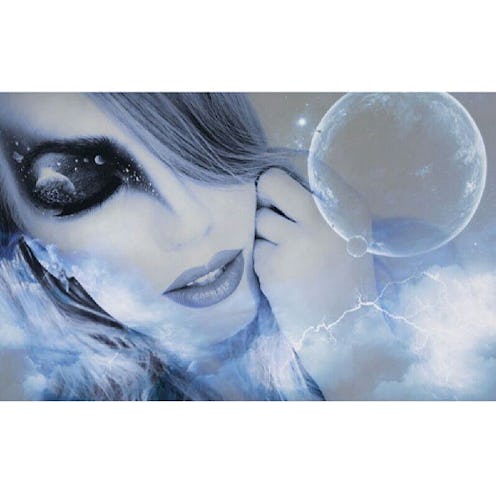Fashion
Extreme Makeup is More Subversive Than You Think

We love us some Pat McGrath and Gucci Westman, but compared to the freakier makeup artists who crawl the web, ignored by the couture world and happily updating their Instagram accounts with zombie tutorials, McGrath and Westman look almost mainstream. The outliers of the makeup world may not be taken as seriously as those who cake on paint for Vogue, but they bring something different — and just as important — to the beauty table.
Makeup is a complicated realm, no questions there. But when it comes to high fashion, we have no problem recognizing McGrath and Westman for the artists they are. Sure, the very idea of makeup calls to mind a host of issues about perception, female beauty, and self-acceptance, but show us a golden eyebrow and we're yours. I'd call McGrath and Westman innovators, visionaries, dreamers, but I wouldn't call them subversive.
The weirdo makeup artists, however? They love to dance in subversive territory. It's not like they're getting the high-paying gigs — we usually hear about them because they've gone viral on Reddit or earned a sensationalistic post on the Daily Mail. Take Israeli artist Tal Peleg's eyelid makeup, or Sandra Holmbom from Sweden who earned her 15+ minutes of Internet fame by turning her lips into a giant eyeball that, ugh, opens and closes. They get clicks and shares because of the freak factor. It's just plain weird to see a face painted like that. But what's so important about this surface-level act?
Extreme makeup is a form of performance art, but it's a wildly accessible one. You don't have to sit for hours in a cold warehouse watching a naked man knit a scarf, or listening to the same four chords on repeat until you have that ah-ha! moment. You just have to ooh and ahh over a pair of lips turned into a giant eyeball. Easy. Cool. But once we look a little closer, we realize that a) we're looking at a form of painting and b) we're witnessing an illusion and because of this, c) we've forgotten that we're looking at a face.
Makeup requires a literal artistic skill set — i.e., you have to be able to hold a brush, draw straight lines, understand shading and contouring, blend colors, and so on. Anyone who thinks it's terribly easy probably hasn't tried to give herself a smoky eye after a glass of red wine with three minutes before her ride arrives.
While the basics of makeup wearing are pretty universally known (putting on mascara, smearing on lipgloss), there's a distinct artistic skill set that separates the professional practitioners from the girls who are just wary of stepping outside without their "face" on. It's easy to forget just how much skill it takes to glop wearable paint on skin — until we see someone like Andy Alcala, who literally draws famous paintings on his face. Oh, okay. That's art, too.
And when the makeup is designed to add something additional to the face, not simply to enhance the natural human contours, it's easy to forget we're looking at a human face at all. Instead of seeing "eyelid," we see "miniature scene." Instead of seeing "pair of lips," we see "surreally huge eyeball." Instead of seeing "man's face," we see "weird version of Monet's sunrise."
"Yeah, yeah," you're thinking. "People draw pictures on their faces. Whatever." But it's so more than that. Let's look at Holmbom's lip-turned-eyes again. She's taken the human lips, which we associate with so much (speech and love and lust and eating and breathing and gossiping and singing) and turned them into something unrecognizable, de-sensualized, and creepy. It makes us question everything we associate with the human face.
And that's where the dialogue about perception, female beauty, and self-acceptance starts.
Image: stjima/Instagram